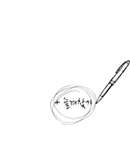| 제목 | Ball joints are a crucial component of a vehicle's suspension system, … | 작성일 | 24-05-09 07:30 |
|---|---|---|---|
| 글쓴이 | Stacie | 조회수 | 12 |
| 이메일 | stacieciantar@hotmail.com | 전화번호 |
On the other hand, automatic transmissions do not require the driver to manually shift gears. Instead, the transmission uses a hydraulic torque converter or a dual-clutch system to automatically change gears based on factors such as vehicle speed, engine load, and throttle position. Automatic transmissions are generally easier to operate and are preferred by drivers looking for a more convenient driving experience.
There are two main types of ball joints: load-carrying ball joints and steering ball joints. Load-carrying ball joints bear the weight of the vehicle and provide a pivot point for the suspension to move up and down. Steering ball joints, on the other hand, are responsible for transmitting the steering inputs from the steering wheel to the wheels, allowing for precise Variable Valve Timing Control of the vehicle's direction.
2. Use proper procedures for jacking up the vehicle: When lifting the vehicle for maintenance or repairs, use proper jacking points to avoid damaging the oil pan. Improper jacking can cause dents or cracks in the oil pan, leading to leaks.
Over time, ball joints can wear out due to constant movement and exposure to the elements. Common signs of a worn-out ball joint include clunking or knocking noises when going over bumps, uneven tire wear, and poor handling or steering responsiveness. It is crucial to address any issues with ball joints promptly, as failure can lead to loss of control, uneven tire wear, and potentially dangerous driving conditions.
4. Avoid over-tightening bolts: When reinstalling the oil pan after an oil change, ensure that the bolts are tightened to the manufacturer's specifications. Over-tightening can damage the oil pan and lead to leaks.
Another issue is a leak in the washer fluid system, which can lead to a loss of fluid and reduced cleaning efficiency. Leaks can occur in the hoses, connections, or even the washer fluid reservoir itself. It is important to address leaks promptly to prevent damage to other components of the vehicle and maintain the safety of the driver.
Manual transmissions, also known as stick shifts, require the driver to manually shift gears by using a clutch pedal and gear stick. By engaging and disengaging the clutch, the driver can select the appropriate gear ratio for different speeds and driving conditions. This type of transmission gives the driver more control over the vehicle's performance and can be more fuel-efficient in some cases.
Common Issues: Like any mechanical component, windshield washer pumps are prone to certain issues over time. One common problem is a failed or malfunctioning pump motor, which can result in no fluid being sprayed onto the windshield when the washer control is activated. This can be caused by a blown fuse, a faulty pump motor, or a clogged filter. In some cases, the nozzles may become clogged with dirt or debris, preventing the washer fluid from spraying onto the windshield effectively.
Conclusion:
In conclusion, knock sensors are essential components in modern automotive engine systems that play a significant role in detecting and preventing engine knock. By monitoring engine vibrations and providing real-time feedback to the ECU, knock sensors help optimize engine performance, protect against potential damage, and ensure smooth and efficient operation. Regular maintenance and prompt attention to any signs of knock sensor malfunction are crucial to maintaining the health and longevity of the engine.
Maintenance:
Proper maintenance of heater hoses is crucial to ensure the efficient operation of the heating system. Regular inspections for signs of wear, cracking, or leaks are recommended, as damaged hoses can lead to coolant loss, overheating, and a lack of heat in the cabin. It is also important to check hose connections, fittings, and clamps for tightness and security to prevent coolant leaks.
In conclusion, ball joints are a critical component of a vehicle's suspension system, providing stability, control, and steering functionality. Regular maintenance and timely replacement of worn-out ball joints are essential to ensure safe and reliable driving experience. If you suspect any issues with your vehicle's ball joints, it is recommended to have them inspected by a professional mechanic to address the problem promptly.
What is a Knock Sensor?
A knock sensor is a small electronic device typically mounted on the engine block or cylinder head that detects vibrations and sounds associated with engine knocking. Knocking occurs when the air-fuel mixture in the combustion chamber ignites spontaneously or unevenly, leading to increased pressure and potentially damaging vibrations.
Introduction:
Knock sensors play a crucial role in modern automotive engine systems by detecting abnormal combustion in the engine, known as knocking or pinging. This article will delve into the function, importance, and operation of knock sensors in ensuring optimal engine performance and longevity.
### Construction of the Oil Pan
Oil pans are typically constructed from stamped steel or aluminum to provide a durable and leak-proof container for the engine oil. They are designed to withstand the high temperatures and pressures present in the engine bay. The oil pan is mounted underneath the engine and is usually bolted directly to the engine block.
There are two main types of ball joints: load-carrying ball joints and steering ball joints. Load-carrying ball joints bear the weight of the vehicle and provide a pivot point for the suspension to move up and down. Steering ball joints, on the other hand, are responsible for transmitting the steering inputs from the steering wheel to the wheels, allowing for precise Variable Valve Timing Control of the vehicle's direction.
2. Use proper procedures for jacking up the vehicle: When lifting the vehicle for maintenance or repairs, use proper jacking points to avoid damaging the oil pan. Improper jacking can cause dents or cracks in the oil pan, leading to leaks.
Over time, ball joints can wear out due to constant movement and exposure to the elements. Common signs of a worn-out ball joint include clunking or knocking noises when going over bumps, uneven tire wear, and poor handling or steering responsiveness. It is crucial to address any issues with ball joints promptly, as failure can lead to loss of control, uneven tire wear, and potentially dangerous driving conditions.
4. Avoid over-tightening bolts: When reinstalling the oil pan after an oil change, ensure that the bolts are tightened to the manufacturer's specifications. Over-tightening can damage the oil pan and lead to leaks.
Another issue is a leak in the washer fluid system, which can lead to a loss of fluid and reduced cleaning efficiency. Leaks can occur in the hoses, connections, or even the washer fluid reservoir itself. It is important to address leaks promptly to prevent damage to other components of the vehicle and maintain the safety of the driver.
Manual transmissions, also known as stick shifts, require the driver to manually shift gears by using a clutch pedal and gear stick. By engaging and disengaging the clutch, the driver can select the appropriate gear ratio for different speeds and driving conditions. This type of transmission gives the driver more control over the vehicle's performance and can be more fuel-efficient in some cases.
Common Issues: Like any mechanical component, windshield washer pumps are prone to certain issues over time. One common problem is a failed or malfunctioning pump motor, which can result in no fluid being sprayed onto the windshield when the washer control is activated. This can be caused by a blown fuse, a faulty pump motor, or a clogged filter. In some cases, the nozzles may become clogged with dirt or debris, preventing the washer fluid from spraying onto the windshield effectively.
Conclusion:
In conclusion, knock sensors are essential components in modern automotive engine systems that play a significant role in detecting and preventing engine knock. By monitoring engine vibrations and providing real-time feedback to the ECU, knock sensors help optimize engine performance, protect against potential damage, and ensure smooth and efficient operation. Regular maintenance and prompt attention to any signs of knock sensor malfunction are crucial to maintaining the health and longevity of the engine.
Maintenance:
Proper maintenance of heater hoses is crucial to ensure the efficient operation of the heating system. Regular inspections for signs of wear, cracking, or leaks are recommended, as damaged hoses can lead to coolant loss, overheating, and a lack of heat in the cabin. It is also important to check hose connections, fittings, and clamps for tightness and security to prevent coolant leaks.
In conclusion, ball joints are a critical component of a vehicle's suspension system, providing stability, control, and steering functionality. Regular maintenance and timely replacement of worn-out ball joints are essential to ensure safe and reliable driving experience. If you suspect any issues with your vehicle's ball joints, it is recommended to have them inspected by a professional mechanic to address the problem promptly.
What is a Knock Sensor?
A knock sensor is a small electronic device typically mounted on the engine block or cylinder head that detects vibrations and sounds associated with engine knocking. Knocking occurs when the air-fuel mixture in the combustion chamber ignites spontaneously or unevenly, leading to increased pressure and potentially damaging vibrations.
Introduction:
Knock sensors play a crucial role in modern automotive engine systems by detecting abnormal combustion in the engine, known as knocking or pinging. This article will delve into the function, importance, and operation of knock sensors in ensuring optimal engine performance and longevity.
### Construction of the Oil Pan
Oil pans are typically constructed from stamped steel or aluminum to provide a durable and leak-proof container for the engine oil. They are designed to withstand the high temperatures and pressures present in the engine bay. The oil pan is mounted underneath the engine and is usually bolted directly to the engine block.
본문
댓글목록
등록된 댓글이 없습니다.
| 이전글 | Title: Understanding Vacuum Leaks: Causes, Symptoms, and Solutions 2024-05-09 |
|---|---|
| 다음글 | A crankshaft is a critical component of an internal combustion engine, playing a crucial role in con… 2024-05-09 |
























